#jeanne de belleville
Explore tagged Tumblr posts
Note
I just discovered about Jeanne de Belleville (aka Jeanne de Clisson), known as the "Lioness of Brittany". She was a French medieval noblewoman and privateer, who lived from 1300 to 1359. Her exact days of birth and death are unknown, so maybe she was 60 by a few days or weeks?
I'll let you decide if you take in this submission, I can't go back in time to make sure she lived long enough🥲
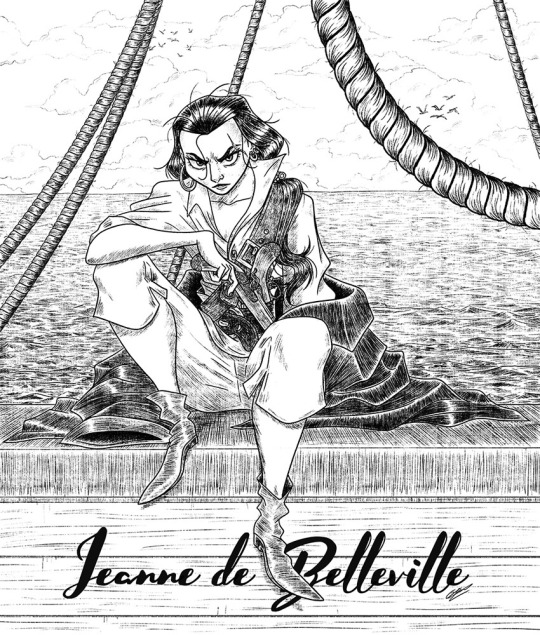
[Art post]
#Jeanne de Clisson#Jeanne de Belleville#poll#smash or pass#smash or pass poll#tumblr polls#old woman
4 notes
·
View notes
Text
The Malevolent Sheep
Embroidered Livestock Who Hate Everyone, But Me Most of All For Bringing Them Into This World
By Doña Ashildr inn Harfagri, 2023
Presented at Castellan
Purpose
The purpose of this paper is not to document a perfect and period reproduction, but to document my thought process and learning process as I attempt to add to an impression of a 14th century English peasant designed for the casual eye.
I play an English shepherdess in 1360 in the fictional town of Avalon for the Medieval Fair of Norman. Due to the timing of this event, weather can be unpredictable, and occasionally very cold and wet. I am in possession of a wool hood from Hobbitronics featuring the crossed trumpets badge of heralds. While this is a delightful hood and definitely one of my warmest pieces, the costuming director and myself have determined the crossed trumpets are not appropriate for the character of Margery Arkewright and more importantly, do not add to the air of perceived authenticity for the visiting patrons. An important note is that certain concessions of historicity are made in order to create a more coherent and easily understandable experience for the patrons of the fair. For example, we restrict all uses of true (not rusty) red to the King and his immediate family to add visual cohesion and allow patrons to more easily identify King Edward III, Queen Philippa, their children, and their children’s spouses.
With that in mind, I began to research decorative motifs and patterns appropriate to the time. Two documents referenced early on were The Luttrell Psalter (approx 1320-1340) and the
Belleville Breviary, a prayer book owned by Captain Jeanne de Clisson, Lioness of Brittany. The latter was particularly intriguing as an inspiration, as the Captain is portrayed as a cast member though she had died in 1359. However, both of these resources are ink on parchment, rather than decoration on fabric. Lady Asa in Blindi pointed out that though aesthetics may be similar, motifs likely differ.
Thus, the Bayeux Tapestry was chosen for inspiration. Though the date of the Tapestry’s completion is murky with the earliest written reference to it dating to a 1476 inventory of the Bayeux Cathedral, it was likely completed in the 11th century, three centuries prior to the date of the Norman Medieval Fair. However, the popularity of the Bayeux Tapestry in online meme culture with an apparent peak around 2018 (Know Your Meme) in conjunction with the popularity of “bardcore” remixes of popular modern songs starting around 2020 with album art featuring images from the Bayeux Tapestry is hoped to have made the imagery of the tapestry more familiar to the average person. For this reason, even though the tapestry predates the target period by approximately three centuries, the design was based on that of the tapestry.
The sheep were designed to mimic the style of animals portrayed in the Bayeux Tapestry and other contemporary pieces, particularly with the near-heraldic postures in what should otherwise be normal scenes.
Below the sheep is a straight line and added grass hillocks inspired by Scene 51, as seen below. Above the sheep is another decorative strip, with a straight line in the same color again, above which there are two pairs of diagonal bars leaning towards each other as seen in Scene 35 (also below) of the tapestry. On either side of these diagonal bars are the 10 point mullets of Ansteorra and between them are two bendwise, stylized shepherds crooks leaning towards each other. Though there is no evidence in the tapestry of either mullets of 5 lesser and 5 greater points or shepherds crooks, they were selected for recognizability and for keeping in theme. Margery Arkewright is recognizable as “The Sheep Lady” of the Fair, so the shepherds crooks were chosen.


The sheep have been lovingly nicknamed “Bonald the Devourer” (left) and “John Wick” (right) through the course of the design.
Materials
Approx 11”x9” dark brown linen, pre washed
J&P Coats cotton embroidery floss, various colors
Chalk Pencil
Concessions of authenticity in materials are made due to supply availability and cost restrictions. I frankly do not have the money to make and dye embroidery floss, yarn, or linen fabric for an experimental piece I expect to see a lot of wear. The actual Bayeux Tapestry is embroidered onto a base fabric of a tabby-woven linen that appears to be undyed, and is embroidered with wool yarn dyed in various colors. In my Bayeux Tapestry themed patch for this hood, I used a commercially dyed brown linen in a tabby weave, and performed the embroidery with embroidery floss also in various commercially dyed colors.
Methods
First the design was sketched out on scratch paper. The fabric then selected was a scrap of dark brown linen. This was chosen because in part earth tones read to the casual audience as “medieval,” “rustic,” and “peasant,” and because in the target decade green and brown were taking off as the most fashionable colors a person could wear. Rather than using modern pattern transfer methods, the design was transferred to the fabric by gridding, using a piece of string as the straight edge and measure. The sheep are outlined in stem stitch as are most of the figures in the tapestry, though they are embroidered in black for visibility on the dark brown fabric.
Then the laid stitch found throughout the tapestry was first tested on the head of Bonald (left sheep) before being applied to the rest of the body. The laid stitch consists of first setting down satin stitch across an area, then applying slightly more spaced out stitches covering the full length of the area perpendicular to the satin stitches, which are then tacked down as seen below. After first application, I compared again to the laid work of the tapestry and added several more columns to better reflect the density seen in the Bayeux Tapestry. The same direction was maintained for the satin stitch across almost the entire body of this sheep aside from the tail, belly tufts, and ears. On the next sheep I experimented with a little more directionality and texture which is also found in the tapestry, which prevented me from having to make a single satin stitch cover quite as much area. Upon trying both methods, I can see the appeal of the variety of directions reducing the overall length of any one satin stitch, which can become unwieldy and tangle or pull the piece taut.
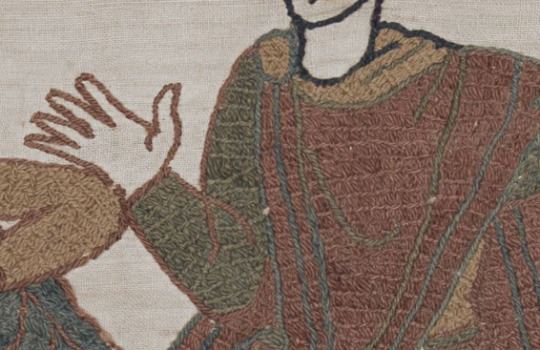
On the horns of each sheep, I experimented using surface couching, which was used in the 14th century. I chose to do this because at first pass, surface couching and laid work appear very similar, and at least to have similar results. At this time, I had finished the first sheep and not started the body on the second, so I was dissatisfied with the density of stitches in the white body of the sheep and was investigating new ways to increase my coverage. Upon finishing the horns, I determined that surface couching produces a very different overall effect to laid work, with denser stitches, but a much less economical use of thread.
After the horns and bodies were done, I added detail to the sheep in stem stitch to better define the fluffy wool. The folds in the fabric on several figures in the tapestry were done in what appears to be stem stitch and act as break points in many cases for the direction of the laid work. Due to the clarity of the folds and details, I had assumed they were applied after the fill color, but after having finished my piece I believe the internal details were applied prior to the fill color.
Following the completion of the sheep, I began embroidering the borders of the top section, the bottom line, and the borders of the diagonals in a soft orange color that reminded me of madder-dyed wool. This also seemed a close match to the color used on said borders in various sections of the tapestry. It was when I started working on the diagonals that I realized I was not, in fact, sewing a stem stitch as I’d thought, but sewing a split stitch. This realization explained several discrepancies I’d noticed in the visual texture of my linework and the linework in the tapestry. The diagonals are sewn in a stem stitch.
The next stage I sewed was the Ansteorran stars, with much wailing and gnashing of teeth. As my chalk lines kept rubbing off before I could get to the stars, I free handed the stars themselves. The first attempt to outline then fill the star like the sheep went sideways as the star did not come out with 5 even points. I eventually settled on sewing the 5 greater points with laid work and the 5 lesser points with satin stitch.
What would I change?
If I were to do this again, I would seek out a more densely woven linen and use either wool yarn as was used in the tapestry itself or the full 6 strands of my embroidery floss for visual density. I believe the fullness and volume of wool yarn will better mimic the appearance of the period piece. I would add more internal detail to break up the longer sections of satin stitch, and I would lay down the detail before adding the fill color. This seems to be the method used in the tapestry, shown in the detail from Scene 51 below.

In the transition from the neck to the spaces of the neck between sections of mane, and in the crook of the horse’s shoulder, the direction and angles of the laid work change. This seems to indicate that the internal detail (horse’s shoulder) was applied before the fill color, and that the particular direction of the laid work can be broken up to better fill a space.
Overall, I believe this project was a success. The goal was not perfect periodicity or reproduction, but to better make a useful piece of garb fit the ambiance designed for the casual (non-medievalist) patron. The patch covers the obtrusively modern machine embroidery and in doing so, helps create the Magic and the Dream for those visiting the Medieval Fair of Norman. I learned a new stitch that I have gone on to use in other hand embroidery projects for the security and economy of materials. I made several mistakes that gave me a better firsthand understanding of this historical piece and have improved and expanded my embroidery skills.
Navigate Bayeux Tapestry scene by scene https://www.bayeuxmuseum.com/en/the-bayeux-tapestry/discover-the-bayeux-tapestry/explore-online/
Bayeux Tapestry Meme Generator https://htck.github.io/bayeux/#!/
Bardcore https://en.wikipedia.org/wiki/Bardcore
Hobbitronics Hood Listing - https://www.hobbitronics.com/hoods.html
Referenced https://cottesimple.com/articles/medieval-embroidery-on-clothing/ for stitching methods
History of Medieval Tapestry Memes https://knowyourmeme.com/memes/medieval-tapestry-edits
Appendix
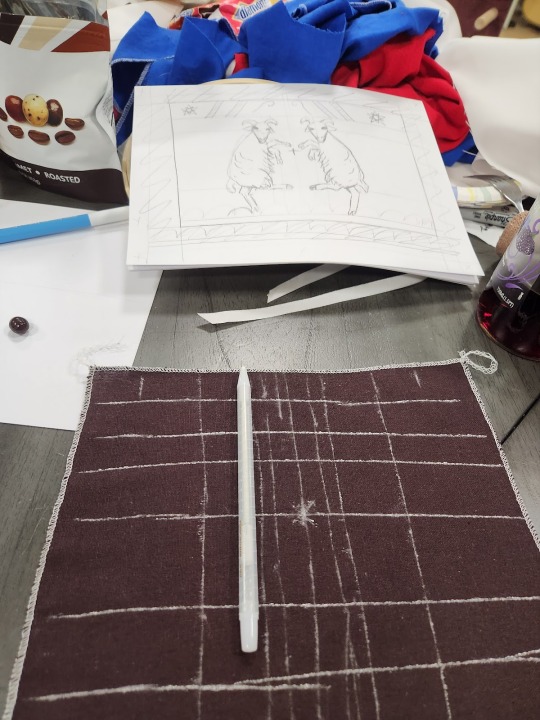
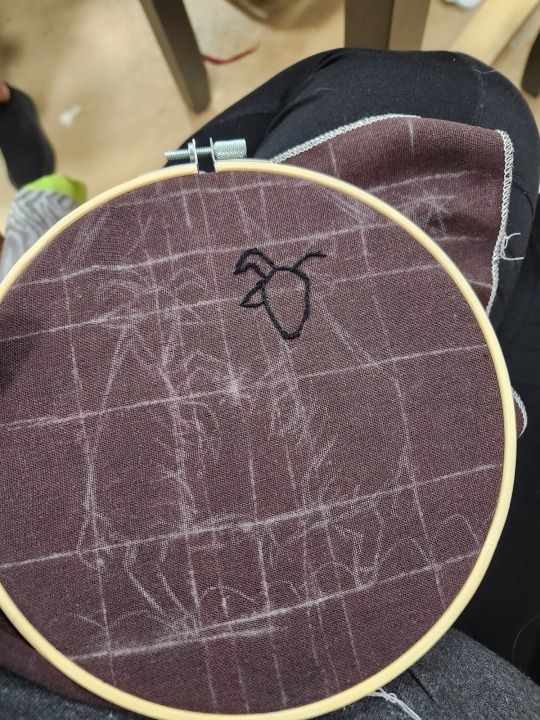
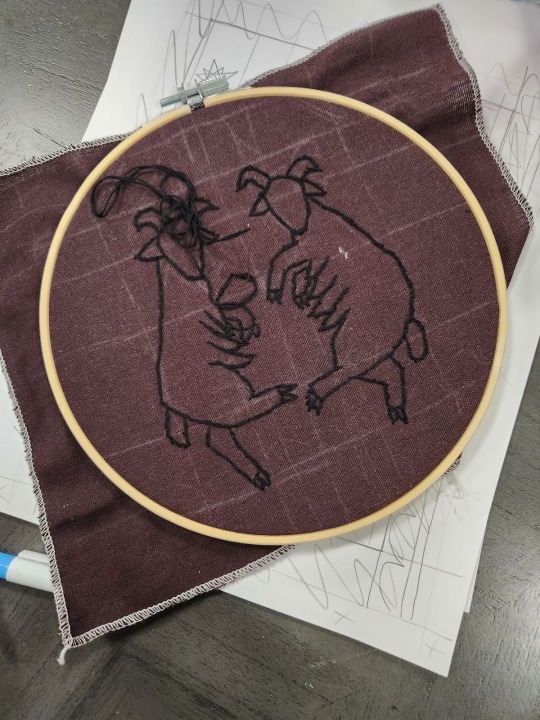


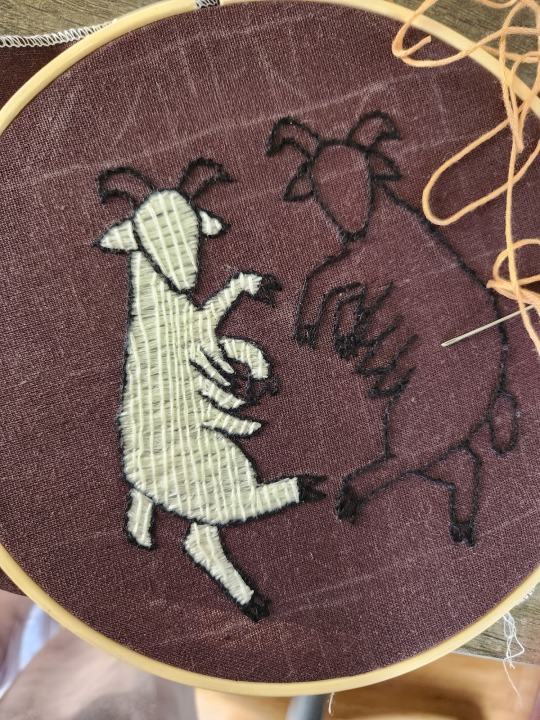
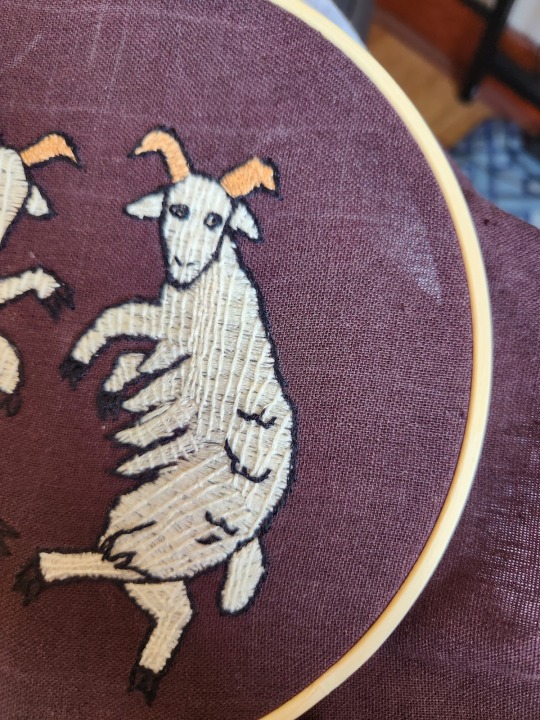
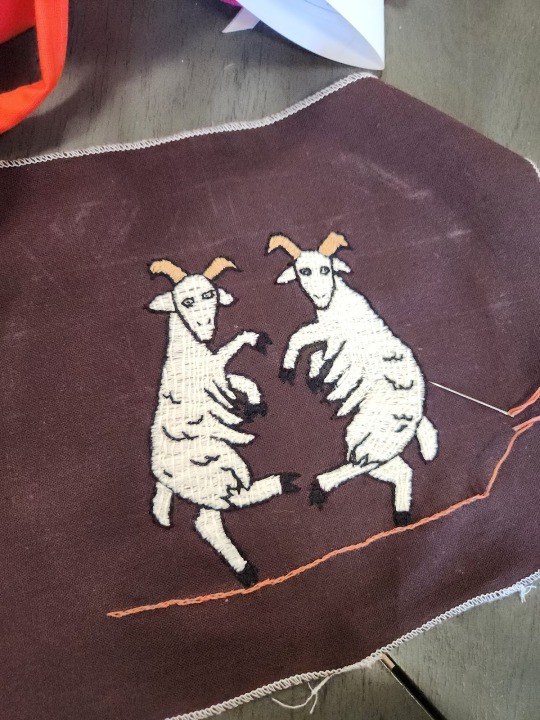
37 notes
·
View notes
Text



Automne 1913, Hylewood, Canada (2/2)
Avec ce règlement indigne, on nous réclame une réforme orthographique pour harmoniser l’orthographe de nos prénoms aux noms anglophones. Lucien était scolarisé depuis un an à l’école bilingue de Gan, mais nous l’envoyons maintenant à l’Albert College, un pensionnat épiscopalien qui se trouve à Belleville et auquel on peut se rendre en quelques heures en automobile, mon frère m’a emmené pour en acheter une pour l’occasion, mais je ne peux pas la conduire et lui non plus, alors M. Rumédier le mari de mon amie Jeanne, a la gentillesse de nous prêter son chauffeur quand nous voulons aller voir notre Lulu à Belleville. Je me perds dans ce que je voulais vous dire et je ne veux pas que vous vous impatientiez, aussi j’y viens. Il a bien fallu que je m’occupe de son inscription, et on a refusé de me le prendre sous son nom de « Le Bris », il a fallu que j’y colle les deux pour qu’on daigne me le prendre. On nous prend jusqu’à nos noms, et on voudrait que je m’appelle LeBris, avec les deux parties toutes-collées. J’en ai écrit à mon mari pour savoir comment qu’il voulait que je nous nomme maintenant, mais il n’a pas encore répondu.
Bien à vous,
Eugénie
#ts3#simblr#legacy challenge#history challenge#decades challenge#lebris#lebrisgen3ter#Jules Le Bris#Eugénie Bernard#Eugène Rumédier#Jeanne Daville#Lucien Le Bris
8 notes
·
View notes
Note
(It’s anon with movies!) i’m open to different genres except for horror movies and something too tooth-rotting romantic, and probably i’d like something made after 1990+!
Okay then, so I've had to remove a very big chunk out of the many romantic films in France. Below, a small list to see what you think about with no romance (except maybe a little bit for Amelie), as you wish and according to my tastes. You may know some of them, so let me know if you do, and if you liked them? I warn you that I'm not taking into account the controversy surrounding the directors. I'm only interested in the quality of the movies. I hope you'll find what you're looking for in this little panel. Normally, they are all available in english or with english subtitles.
But I have an objection the 90s were a good area for Luc Besson's action movies :

Nikita (La femme Nikita for the english speakers), Director Luc Besson

Léon (For english speakers Leon the professional), Director Luc Besson

Jeanne D'Arc (Joan of Arc for english speakers), Luc Besson

2000 : Harry, un ami qui vous veut du bien, director Dominic Moll

2000 : Le goût des autres (For english speakers Taste of others), director Agnès Jaoui

2001 : Le Fabuleux destin d'Amélie Poulain (Amelie for english speakers), Director : Jean Pierre Jeunet
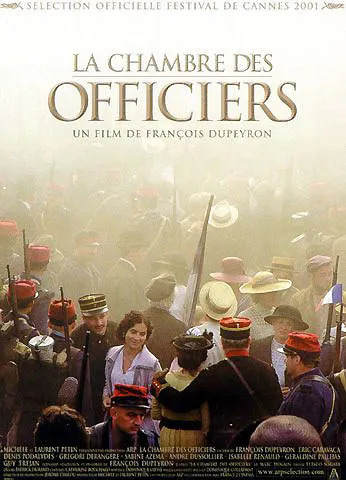
2001 : La chambre des officiers, director François Dupeyron

2001, Le Pacte des loups, director Christophe Gans

2002 : L'auberge Espagnole, director : Cédric Klapisch

2002, Le Pianiste, director Roman Polanski

2002, Monsieur Batignole, director Gérard Jugnot

2003, Les Triplettes de Belleville, director Sylvain Chomet

2003, Swimming Pool, director François Ozon
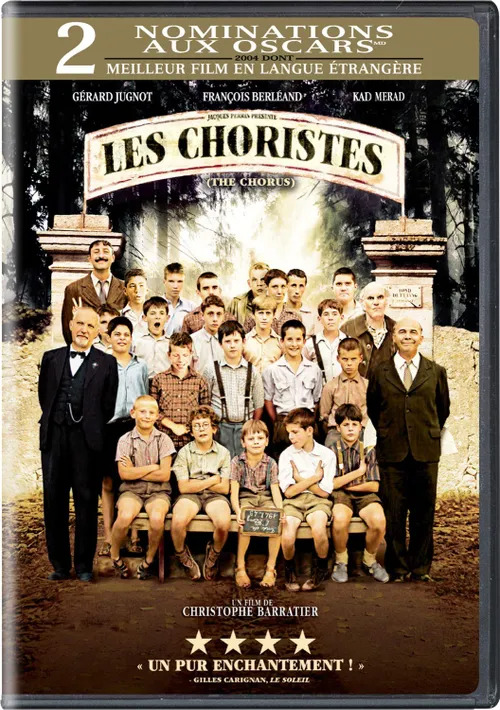
2004 : Les Choristes (For english speakers The Chorus), director Christophe Barratier

2004, 36, Quai des Orfèvres, director Olivier Marchal

2005, Enfermés dehors, director Albert Dupontel

2005, Joyeux Noël, director Christian Carion

2005, De battre mon coeur s'est arrêté, director Jacques Audiar

2006, Ne le dis à personne, director Guillaume Canet

2006, Je vous salue Sarajevo, director Jean Luc Godard

2007, Le Scaphandre et le Papillon, director Julian Schnabel

2008, Mesrine instinct de mort (part 1), director Jean François Richet

2008, Mesrine ennemi public numéro 1, director Jean François Richet

2008 : Le premier jour du reste de ta vie, director Rémi Bezançon

2008 : Deux jours à tuer, Jean Becker
5 notes
·
View notes
Text
⚔️ Jeanne de Belleville
"𝓵𝓪 𝓛𝓮𝓸𝓷𝓮𝓼𝓼𝓪 𝓼𝓪𝓷𝓰𝓾𝓲𝓷𝓪𝓻𝓲𝓪 𝓭𝓮𝓵𝓵𝓪 𝓑𝓻𝓮𝓽𝓪𝓰𝓷𝓪".







0 notes
Link
⚔️ Découvrez l’histoire fascinante de Jeanne de Belleville, la première femme pirate connue de l’Histoire ! 🌊 Bouleversée par l’exécution de son mari, elle a semé la terreur sur les côtes françaises au XIVe siècle. Plongez dans son destin de vengeance avec le roman graphique “La Tigresse Bretonne”. 📚
0 notes
Text
La Tigresse bretonne. Jeanne de Belleville
Elle fut la première femme pirate de l’Histoire… Quand Philippe VI, roi de France, fait décapiter pour trahison le seigneur breton Olivier de Clisson, il ne se doute pas qu’il vient de donner naissance à son pire ennemi. Car la veuve, Jeanne de Belleville, ivre de rage et prête à tout pour venger la mort de son mari, décide de prendre les armes et de livrer une guerre sans merci au Royaume de…
0 notes
Text
Jeanne de Clisson, Lady Bentley (1300–1359), also known as Jeanne de Belleville and the Lioness of Brittany, was a French / Breton former noblewoman who became a privateer to avenge her husband after he was executed for treason by the French King Philip VI. She crossed the English Channel targeting French ships and often slaughtering their crew. It was her practice to leave at least one sailor alive to carry her message of vengeance.
Like holy shit
Was nobody gonna tell me about Jeanne de Clisson
4 notes
·
View notes
Text
The Lioness of Brittany
This lady from Brittany lived from 1300-1359 and her real name was Jeanne-Louise de Belleville de Clisson Dame de Montaigu. She was a noblewoman from Brittany who, as heir to her family, took over the estates and the salt trade, and later a Pirate.
She married for the first time at the age of 12, the 19-year-old Geoffrey de Châteaubriant VIII, who died in 1326, and had her first two children with him at 14 and 16. After his death, in 1328, Jeanne married Guy de Penthièvre of the House of Penthièvre, widower of Joan of Avaugour and son of the Duke of Brittany, for the protection of her children. The union was short-lived, as relatives of the ducal family, particularly from the de Blois faction, complained to the bishops of Vannes and Rennes to protect their inheritance, and an investigation was held on 10 February 1330, leading to the annulment of the marriage by Pope John XXII. Then, in the same year 1330, Olivier IV de Clisson married a very wealthy Breton. They had five children together: Maurice, Guillaume, Olivier, Isabeau († 1343) and Jeanne. In 1342, Olivier, joined the Duke of Brittany Charles de Blois in the Breton War of Succession defending Brittany against the English claimants and the forces of English sympathizer John de Montfort.
During the ensuing campaign, Olivier came under suspicion and criticism from Charles de Blois for failing to hold Vannes against the English forces so Clisson defected to the English side. January 1343, the Truce of Malestroit was signed between England and France and under the perceived safe condition of this truce Olivier and fifteen other Breton lords were invited to a tournament on French soil. He was arrested and beheaded for treason against the king. His head was sent to Nantes, where it was presented on a spit on the battlements of Bouffray Castle near Nantes. His widow, Jeanne, swore revenge on the king and Charles de Blois, who had happily supported the death sentence.
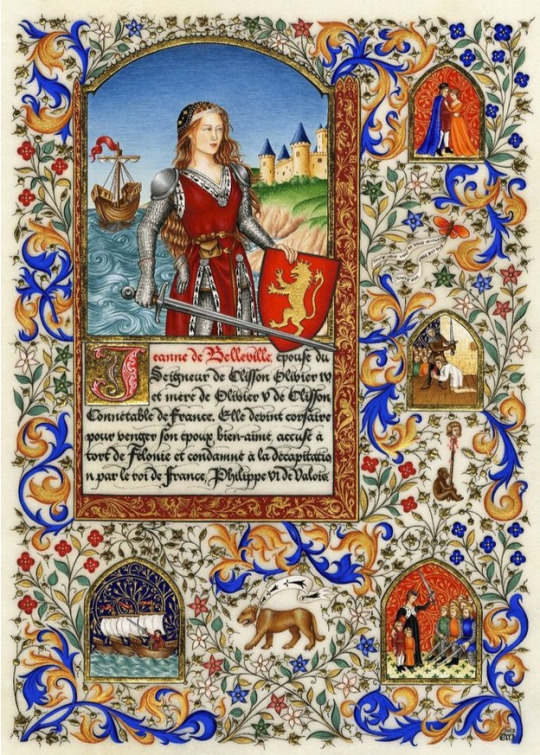
A painting of Jeanne in a mock 15th century style, part of a composition by Elsa Millet. (x)
Her revenge consisted of selling her possessions and buying a ship. Dismayed by the death of her liege lord, she quickly found a crew of 400 men and together they hunted down French merchant ships. After several successful battles, including two attacks on two castles, her ship was badly damaged and she had to flee. She found protection and support in England and from King Edward. He and Breton sympathisers gave her money and she was able to buy several war cogs, which she had painted black and fitted with red sails, the flagship was named My Revenge. Because of this appearance, the fleet received the name Black Fleet. The ships of this Black Fleet are said to have first attacked ships in the Bay of Biscay, but then advanced into the English Channel to hunt down French merchant ships, killing entire crews and leaving only a few witnesses to carry the news to the French king. This earned Jeanne the nickname "The Lioness of Brittany" or in French “La Tigresse bretonne” (The breton tigress).
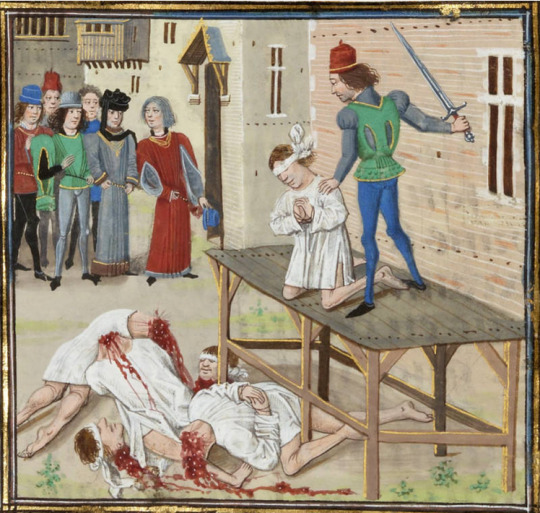
Execution of Olivier IV de Clisson. Painting attributed to Loyset Liédet, Flemish illuminator (v.1420-v.1483) in the Chronicles of Lord Jehan Froissart. (x)
She is sometimes referred to in literature as a privateer of the English, which would imply that she was subject to certain protections and obligations, but there was no known letter of marque.
In 1346, during the Crécy campaign in northern France, Jeanne used her ships to supply the English forces.
In the process, the French eventually succeeded in attacking her fleet and sinking her flagship. Jeanne and her two sons drifted at sea for five days; her son Guillaume died from the effects of the cold. Jeanne and Olivier were eventually rescued and taken to Morlaix. But this did not stop their revenge, on the contrary Jeanne continued her piracy in the Channel for another 13 years.
She probably ended her revenge in 1356, but by 1350 she had married the English nobleman, Walter Bentley, lieutenant to King Edward III until 1353 and captain of the English troops who continued to fight Charles de Blois. For his services and inheritance, both had received lands and castles in Brittany, which they were to relinquish in 1353 in order to finally achieve peace Charles de Blois. Bentley refused and was imprisoned in the Tower of London. Jeanne, tired of fighting, gave up and handed over the lands they had wanted. He was then released and in January 1357, the barony of La Roche-Moisan was granted to them. Toward the end of her life, she returned to France and has lived in Hennebont castle until the end of her life in 1359.
#naval history#female pirate#jeanne de belleville#the lioness of brittany#14th century#medieval seafaring
154 notes
·
View notes
Text
Un autre château....#1
Un autre château….#1
Comme je vous l’ai déjà expliqué précédemment dans un autre article , nous aimons visiter des châteaux! Alors aujourd’hui je vais vous parler du château de Clisson . Ce château ayant appartenu a un des personnages de l’histoire que j’apprécie le plus, ces avec bonheur que je vous le présente . Jeanne de Belleville ! Crédit photo :Google Sachant que c’est un endroit que j’ai énormément adoré…
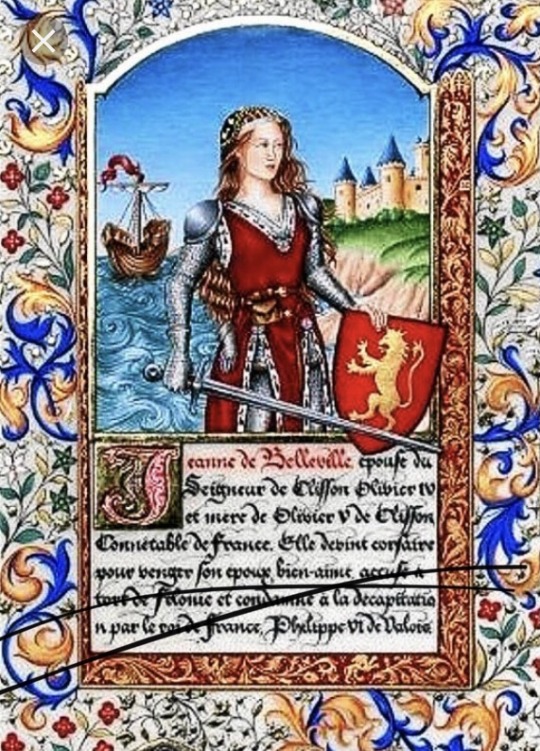
View On WordPress
1 note
·
View note
Text
Jeanne de Belleville (histoire vraie)

Il était une fois, Jeanne de Belleville née en 1300, fille d’un seigneur du Poitou, qui épousa Olivier de Clisson, grand seigneur breton avec qui elle eut 5 enfants. Seulement à cette époque, la Bretagne se déchirait car il n’y avait pas de successeur légitime au duc de Bretagne. Les uns étaient pour Jean de Montfort, soutenu par les anglais et les autres pour Charles de Blois, le pote du roi de France. Bref, cela déclara une guerre civile. Mais au départ, je pense que la Jeanne devait s’en foutre royalement. Par contre en tant que seigneur, son mari intervint pour défendre Vannes assiégé par les pro-anglais. Il fut obligé de se rendre et envoyé en Angleterre pieds et poings liés. Sa rapide capitulation parut suspecte et quand il revint en France, il fut arrêté sur le champ par ordre du roi. Son procès a été expéditif : condamné à mort pour félonie (trahison). On lui a coupé la tête, son corps fut pendu et exposé à Paris tandis que la tête a été plantée sur une pique en haut des murs du château de Nantes. Écœurée, Jeanne de Belleville vint avec ses deux garçons voir la tête et leur fit promettre de se venger. Elle commença par organiser l’attaque et le massacre d’une garnison à Château-Thébaud, puis elle acheta 3 navires et pendant plusieurs années, elle fut une des premières femmes corsaires de l’histoire, en attaquant tous les bateaux de commerce français, gagnant ainsi le surnom de la lionne des mers ou encore la tigresse bretonne. Elle en voulait tellement au roi de France que ce dernier a demandé au pape d’intervenir en sa faveur auprès du roi d’Angleterre pour lui ordonner d’arrêter la piraterie. Elle mourut en 1359, on ne sait pas ou.
Alex@r60
28 notes
·
View notes
Text
Pirate Queen EXTRAVAGANZA
Do you like badass lady pirates, both legendary and historical? Then check out my blog series!
Read about the Viking princess, Alfhild, who " began to reject all men and firmly resolved … to surpass male courage in the practice of piracy.” https://amandakespohl.wordpress.com/2018/03/11/alfhild-the-pirate-princess/

Or perhaps you’re interested in the tale of Grace O’Malley, the longest reigning pirate queen of all time. A contemporary of Queen Elizabeth I, legend has it that she gave birth on one of her ships and led her men into battle on the very next day. :O https://amandakespohl.wordpress.com/2018/04/09/grace-omalley-part-1/
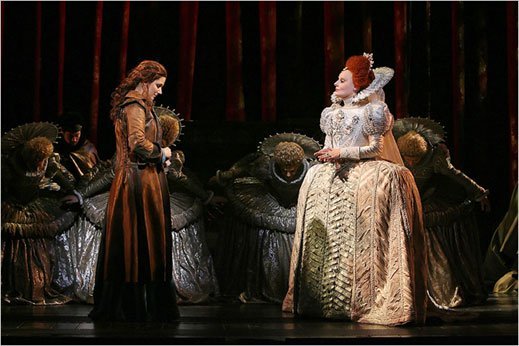
I’d also highly recommend reading about Jeanne de Belleville, the Lioness of Brittany, who terrorized French ships and the French coast after her husband was unjustly executed. https://amandakespohl.wordpress.com/2018/04/12/jeanne-de-belleville-the-lioness-of-brittany/

Oh, and hey, how about reading about Queen Artemisia of Halicarnassus, an adviser to King Xerxes of Persia and a badass pirate who survived the first naval battle in recorded history through sheer ruthlessness and good fortune? https://amandakespohl.wordpress.com/2018/04/05/queen-artemisia/

There’s also Sayyida al-Hurra, whose name is actually a title which translates to “ noble lady who is free and independent; the woman sovereign who bows to no superior authority.” And if that mic drop of a name isn’t enough to convince you that she was amazing, read about how she ruled a city in northern Africa in her own right in the 16th century, controlled piracy in the western Mediterranean in cahoots with the infamous Captain Barbarossa, and basically told the Sultan of Morocco that if he wanted to marry her so badly, he’d have to get off his duff and come to HER. https://amandakespohl.wordpress.com/2018/04/26/sayyida-al-hurra/

Also, did you know that the most successful pirate of all time was a Chinese woman known as Ching I Sao? She led the largest pirate fleet, and was so massively successful and fierce that she managed to negotiate a cushy retirement deal for herself and all her men even after all her plundering! https://amandakespohl.wordpress.com/2018/05/01/ching-i-sao/
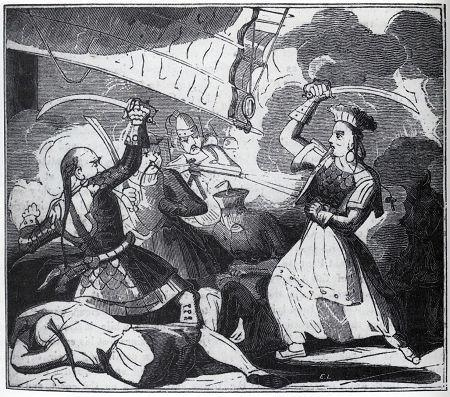
Just in case you thought I was done, nope. BOOM! Here’s a thread about Queen Teuta of Illyria, also known as “The Terror of the Adriatic.” She not only legalized piracy in Illyria to open up some cash flow back to her city-state, she led expeditions and terrorized rival city-states until she made the mistaken of stepping to the Roman Empire. https://amandakespohl.wordpress.com/2018/05/03/queen-teuta-of-illyria-the-terror-of-the-adriatic/

Oh, and don’t forget Jacquotte Delahaye, or “Back from the Dead Red.” She may just be the stuff of legend, but she still has that lady pirate swag! https://amandakespohl.wordpress.com/2018/05/02/jacquotte-delahaye-or-back-from-the-dead-red/. Ditto for Pretty Peg, the fiercest wifey on the seven seas: https://amandakespohl.wordpress.com/2018/05/04/pretty-peg/.

#pirate woman#pirate#pirates#pirate queens#pirate women#Back from the Dead Red#Pretty Peg#Queen Artemisia#Queen Teuta#Grace O'Malley#sayyida al-hurra#ching shih#ching i sao#jeanne de belleville#the lioness of brittany#princess alfhilde
4 notes
·
View notes
Text
Jeanne de Belleville, una nobildonna brettone del XIV secolo che, per motivi, praticò la pirateria con una tale ferocia da essere soprannominata “la Leonessa sanguinaria della Bretagna”. Una vita decisamente singolare e avventurosa che viene ancora ricordata nella tradizione della Bretagna.
La giovinezza
Jeanne Louise de Belleville Clisson de Montaigu nacque nel 1300 a Belleville-sur-Vie nel Vendée. A soli dodici anni fu data in sposa al suo primo marito, di soli 19 anni, Geoffrey de Châteaubriant VIII, un nobile brettone. La giovane coppia ebbe due figli, Geoffrey IX, che ereditò le proprietà di suo padre e il titolo di barone, e Louise che sposò Guy XII de Laval e, dopo la morte in battaglia del fratello, ne ereditò la tenuta come baronessa. Jeanne, dopo la morte di Geoffrey sposò nel 1328 Guy di Penther. Non si sa molto di lui ma fu un matrimonio breve perché, dopo un’indagine ecclesiale, nel 1330 fu annullato da Papa Giovanni XXII.

0 notes
Photo










Été 1881, Hylewood, Canada (10/13)
Mon premier réflexe fut de penser que Françoise était derrière cela, mais Jeanne soutient que ce n’est pas le cas. Son ardeur à la défendre montre qu’elle sait probablement quelque chose qui disculperait sa sœur et qu’elle ne nous partage pas, certainement en lien avec la dispute qui avait agité mes deux aînées la veille.
[Transcription]
Françoise Le Bris : Encore toi ? Frappe avant d’entrer.
Jeanne Le Bris : Je te laisse une chance d’aller te dénoncer de toi-même, et si tu refuses, j’irai voir les parents !
Françoise Le Bris : Ton cabot mal élevé faisait des siennes pendant que tu étais à ta leçon, alors je suis allé le promener, voilà tout. Il a fini par s’échapper, alors comme je ne le trouvais pas j’ai fini par rentrer. L’île n’est pas bien grande, et il aurait fini par retrouver son chemin ou on nous l’aurait rapporté.
Jeanne Le Bris : Ne me prends pas pour une idiote, je sais que tu mens, et les parents le verront aussi !
Françoise Le Bris : Oh, je serai toi, je me fierai à ma version.
Jeanne Le Bris : Comment !…
Françoise Le Bris : Dans la lettre que ton amie, Mademoiselle Lachapelle, t’envoie en juillet dernier, il est mention d’un jeune homme de l’Albert College de Belleville, qui t’aurait proposé d’assister à un concours canin auquel son labrador retriever doit concourir.
Françoise Le Bris : Or, dans sa lettre de septembre, Mademoiselle Lachapelle regrette de ne pas avoir pu « vous » accompagner vendredi dernier.
Jeanne Le Bris : Oh !!
Françoise Le Bris : J’ai fait mes recherches, vois-tu, et j’ai pu voir que ce concours canin se déroulait le vendredi après-midi.
Jeanne Le Bris : Tu lis mes lettres !!
Françoise Le Bris : Il faut quatre heures pour se rendre à Belleville. Tu aurais donc quitté Kingston le matin, assisté au concours l’après-midi… Et je doute que tu sois rentrée le soir.
Françoise Le Bris : Jamais un jeune homme bien élevé ne t’aurait laissée voyager si longtemps après le coucher du soleil, tu as donc dormi sur place. Ce qui signifie que tes occupations, entre le vendredi soir et le samedi matin, demeurent un mystère…
Françoise Le Bris : Comment crois-tu que Papa réagira, quand il apprendra que sa chère Jeanne, sa fille si parfaite et innocente, se compromet avec un jeune homme ?
#ts3#simblr#legacy challenge#history challenge#decades challenge#lebris#lebrisgen2quater#Auguste Le Bris#Jeanne Le Bris#Françoise Le Bris#Lucienne Lachapelle
7 notes
·
View notes
Photo






Favorite History Books || Olivier de Clisson and Political Society in France Under Charles V and Charles VI by John Bell Henneman ★★★★☆
THE ANCESTRAL FORTRESS of the lords of Clisson is located in the extreme southeastern corner of Brittany on a lofty rock overlooking the Sévre Nantaise some twenty miles upstream from the river’s confluence with the Loire near Nantes. It was there that the greatest member of the family was born on 23 April 1336 and named for his father, Olivier III de Clisson, who held important lands in Brittany and elsewhere in northwestern France. The child’s mother, Jeanne de Belleville, was an heiress who controlled a group of lordships in Poitou just south of the Breton border, stretching from Beauvoir-sur-Mer in the west to Chateaumur southeast of Clisson. Decades later, Olivier IV would be one of the kingdom’s most powerful men, leading the military aristocracy of northwestern France and flaunting the assertive motto “because I like it”.
Historians have been slow to recognize his importance, partly because of a reluctance to trust the chronicle of Froissart, but mainly because Clisson represented elements of French political society that did not leave “institutional footprints,” such as membership in the royal council. such as membership in the royal council. For nearly forty years prior to 1360, this small council had been the forum for political debate in France. Kings altered its composition as they faced new political pressures, and the council came to mirror what the distinguished French historian Raymond Cazelles called la société politique—those people who influenced events, whose political power or opinions counted when the French royal government was deciding important matters of policy. After 1360, however, the council became unusually stable, and certain men who acquired great influence in political society remained for a long time outside this body. One of these was Olivier de Clisson.
#historyedit#litedit#olivier de clisson#medieval#bretoned#french history#european history#history#history books#nanshe's graphics
26 notes
·
View notes